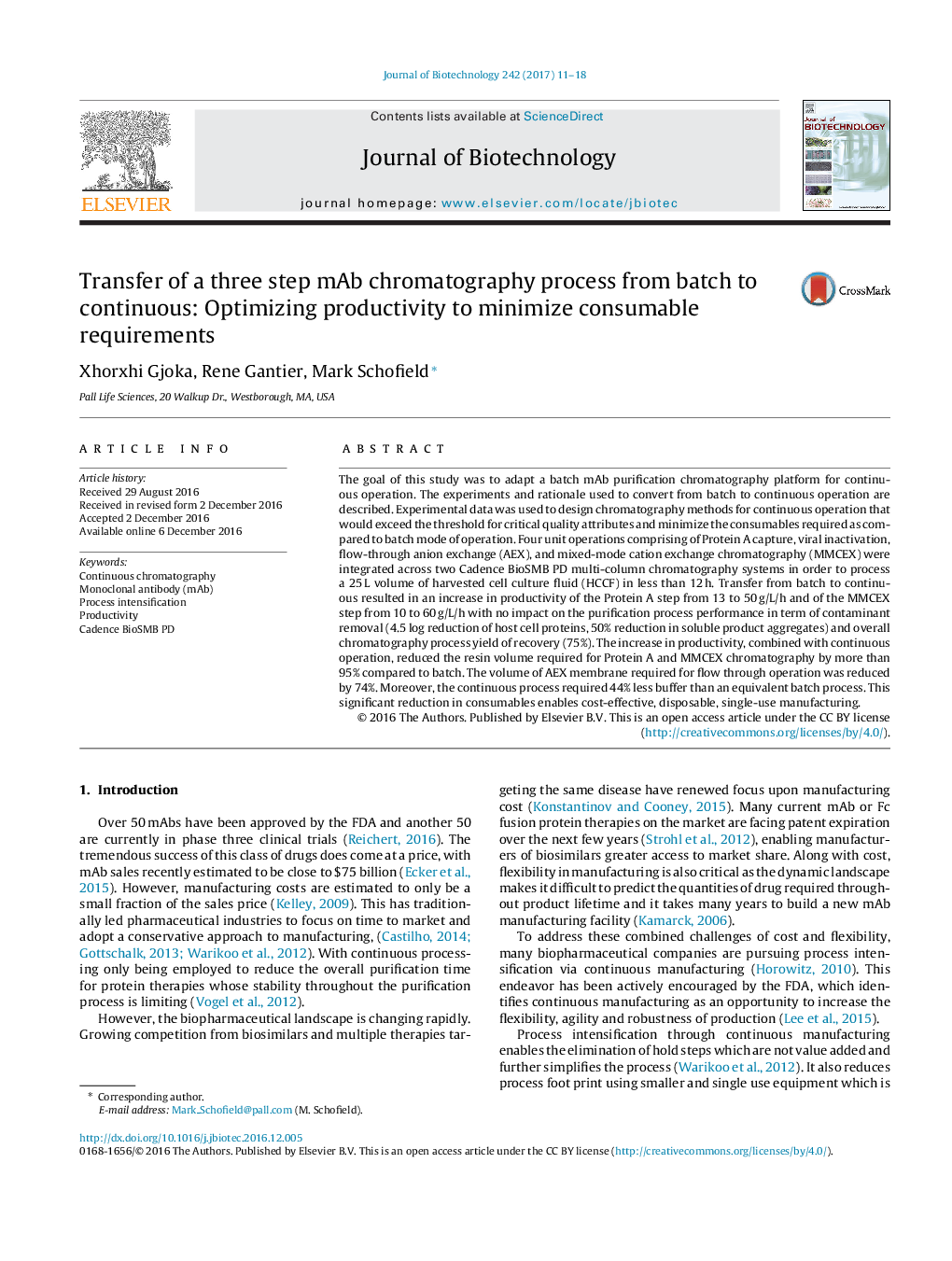| Article ID | Journal | Published Year | Pages | File Type |
|---|---|---|---|---|
| 6452225 | Journal of Biotechnology | 2017 | 8 Pages |
â¢Four batch purification unit operations were transferred to continuous operation.â¢25 L volume of harvested cell culture fluid (HCCF) processed in less than 12 h.â¢Continuous operation achieved 75% yield, 4.5 log reduction of HCP and 50% aggregate reduction.â¢Reduced Protein A and mixed-mode cation exchange volume over 95%.â¢Reduced flow through anion exchange membrane absorber volume by 74%.
The goal of this study was to adapt a batch mAb purification chromatography platform for continuous operation. The experiments and rationale used to convert from batch to continuous operation are described. Experimental data was used to design chromatography methods for continuous operation that would exceed the threshold for critical quality attributes and minimize the consumables required as compared to batch mode of operation. Four unit operations comprising of Protein A capture, viral inactivation, flow-through anion exchange (AEX), and mixed-mode cation exchange chromatography (MMCEX) were integrated across two Cadence BioSMB PD multi-column chromatography systems in order to process a 25Â L volume of harvested cell culture fluid (HCCF) in less than 12Â h. Transfer from batch to continuous resulted in an increase in productivity of the Protein A step from 13 to 50Â g/L/h and of the MMCEX step from 10 to 60Â g/L/h with no impact on the purification process performance in term of contaminant removal (4.5 log reduction of host cell proteins, 50% reduction in soluble product aggregates) and overall chromatography process yield of recovery (75%). The increase in productivity, combined with continuous operation, reduced the resin volume required for Protein A and MMCEX chromatography by more than 95% compared to batch. The volume of AEX membrane required for flow through operation was reduced by 74%. Moreover, the continuous process required 44% less buffer than an equivalent batch process. This significant reduction in consumables enables cost-effective, disposable, single-use manufacturing.
